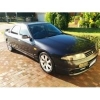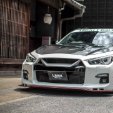Why the hell did Nissan stop selling the Skyline in Aus?
Announcements
-
Similar Content
-
Latest Posts
-
Hi. I tried to find anything to go be. I found this: https://justjap.com/products/xtreme-heavy-duty-organic-clutch-flywheel-kit-nissan-skyline-r31-r32-r33-push-type Can i use this clutch kit in my case? Engine RB25DET NEO Gearbox "Small box" FS5W71C It is a Push type clutch a and gerabox(slave cyl) THX
-
I can get 84896-RHR20 and ship it to you from Japan, but what do you consider a reasonable price? They cost 9,200 Yen from Nissan back in 2017.
-
Honestly don’t even think they stock them anymore. They are discontinued.
-
Hi all, anyone know where I can pick one of these up for a reasonable price? I just resprayed my rear trunk due to fuel stain and my new muse spat install. added a photo for some content 🤣👍 thanks
-








Recommended Posts
Create an account or sign in to comment
You need to be a member in order to leave a comment
Create an account
Sign up for a new account in our community. It's easy!
Register a new accountSign in
Already have an account? Sign in here.
Sign In Now